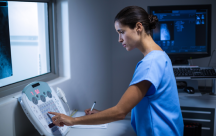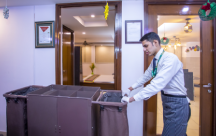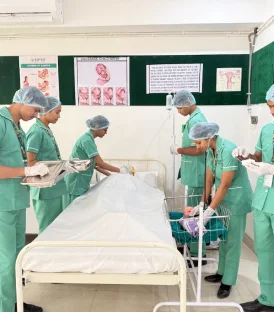November 09, 2022
Barium enema is a fluoroscopic technique performed to diagnose, structural or functional abnormalities of the large intestine by using barium sulphate contrast media.
Indication
Indication for the examination are suspected mass , polyps,abdominal pain, chronic diarrhea, loss of weight, diverticulosis, melena,partial obstruction,large intestine volvulus.
Contraindications
Contraindications for the procedure are bleeding piles, recent biopsy, incomplete bowel preparation, suspected fistula, suspected perforation, suspected pregnancy, Complete bowel obstruction.
Contrast medium
Contrast medium used for the procedure is barium sulphate powder.
Patient preparation
The procedure is done by taking accurate and clear history, a low residue diet for 2 days prior to the examination, a laxative should be given on the evening and NPO for 6 hours prior to the examination, plain water enema must apply to clear fecal matter and ask patient to remove clothing and wear hospital gown.
Plain radiograph
Plain radiograph of the abdomen is taken to see the bowel preparation. If the residual fecal matter is present in the bowel, the examination should be postponed for the next day.
Technique
Technique for procedure is done by patient lie on their side on x ray table and an injection of a medication called buscopan is given into arm to prevent involuntary bowel movement.
Single contrast study
Single contrast study is done by inserting small soft tube into rectum during expiration phase and barium is passed through the tube and patient are allowed to move around bit to help the barium spread along the bowel then several x ray films are taken.
Double contrast study
Double contrast study is done by pushing air after the barium in the rectum for more detailed image and this is called an air contrast barium enema.
Films
Films taken after the procedure are PA for entire colon, true lateral for rectosigmoid and evaluation of pre sacral space, pelvis AP for rectum and sigmoid, RPO and LPO for splenic or heptic flexure and colon.After the evacuation, full length abdomen x ray is done to see the residual contrast.
After the procedure patient is allowed to leave the exam and should be warned that his bowel will be white for a few days .The patient should advised to drink adequate volumes of water to avoid constipation.
Complications
Complications can be inflammation in tissues surrounding the colon, obstruction in the exam gastrointestinal tract, tear in the colon wall.
Submitted by
Ms Divya Jha Faculty of Radiology

















